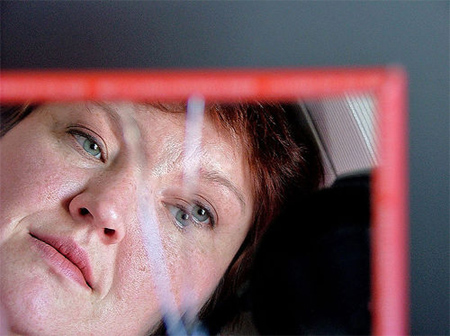A broken idea (called a “cognitive distortion” in the psychological literature) is a thought that creates problems because it’s flawed.
Some examples of broken ideas: “You always interrupt me!” (Always? Every single time?) “People think I look stupid when I dance.” (Everyone does? You can read their minds?) “I look like a mess for this interview! This is a disaster!” (As bad as the Hindenberg or Hurricane Katrina? It’s a disaster and not just an inconvenience?).
Broken ideas tend to play in loops in our minds, and this ongoing commentary often has the effect of causing trouble: disrupting work, encouraging us to act badly, or just making us miserable. I talk elsewhere on the site about how to detect broken ideas and how to repair them and provide an introduction to broken ideas, but a correspondent recently made the very good suggestion of posting examples of each type.
All-or-nothing thinking:
Looking at things as though they’re completely black or white, with no room for neutral or contrary characteristics.
“This job is the worst job I could possibly have. I hate it.”
Overgeneralization:
Taking a few examples and assuming that they describe an absolute pattern.
“My last two relationships ended badly: I must be completely incompetent at love.”
Mental filter:
Ignoring important facts to come up with a faulty conclusion.
“Mom and Dad always paid attention to you and never to me.”
Disqualifying the positive:
Ignoring anything that might get in the way of a negative judgment.
“It doesn’t matter that my boss complimented my work: since I didn’t get the promotion, I’m obviously a failure.”
Fortune telling:
Making assumptions about what will happen in the future.
“All this studying won’t help, and I’ll fail the test.”
Mind reading:
Making assumptions about what other people are thinking.
“Everybody in the audience must think I’m a complete idiot up here.”
Magnification or minimization:
Exaggerating or understating anything about a situation.
“I have to move? This is awful! This will ruin everything I have set up in my life!”
Emotional reasoning:
Assuming that something’s true because it feels like it’s true.
“I know I planned the event carefully, but I know something’s going to go wrong.”
Should statements:
Getting upset because one doesn’t have control or governance over other people’s actions, random events, or basic facts of existence.
“That jerk shouldn’t be driving so slowly in the left lane!”
“I should be able to eat cookies whenever I want to! It’s not fair that my coworkers can do that and not get fat!”
Labeling:
Describing something in a way that prevents it from being clearly seen and often makes it seem much worse than it is.
“I’m a coward and loser, and nothing’s going to change that.”
Personalization:
Assuming that a situation or event says something about oneself personally when it doesn’t.
“I didn’t win this contest–they must think I’m a terrible writer.”
Photo by 1Sock












